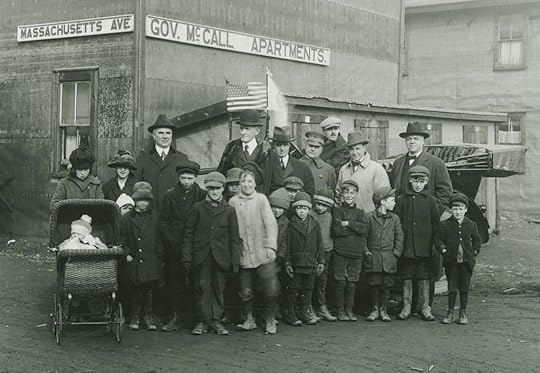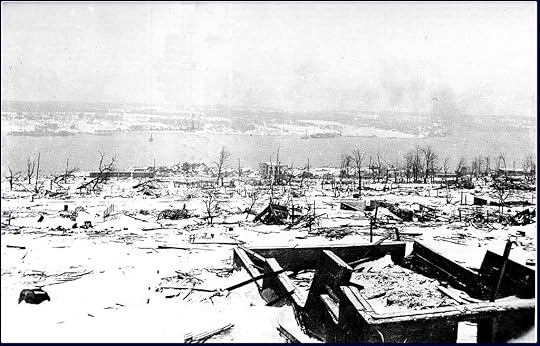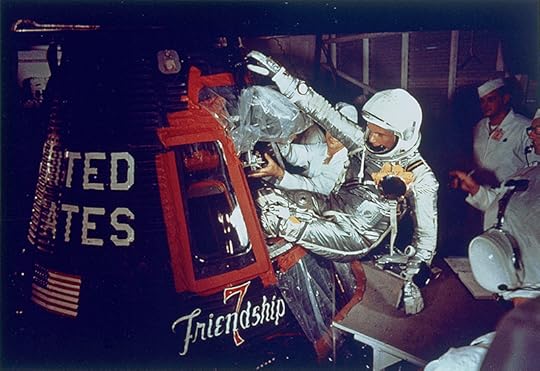Bathroom Readers' Institute's Blog, page 70
December 15, 2016
5 Strange Marathon Races
To Uncle John, the idea of running 26.2 all at once is quite absurd in and of itself. But there are some marathons out there that are truly running away from normal as fast as they can.
The Great Wall Marathon
Seeing the Great Wall of China is on many people’s “bucket list” of the things to do before they die. For many runners, it’s running at full speed on top of the Great Wall of China that they’d like to accomplish. The Great Wall Marathon is a standard long-distance race along the famous landmark—but just under four miles of the race requires runners to run on the wall. It’s 5,000 stone steps up steep slopes, both uphill and downhill.
Tenzing-Hillary Everest Marathon
Named for Tenzing Norgay and Edmund Hillary, credited as the first humans to climb Mount Everest, the Tenzing-Hillary Everest Marathon is held in late May and begins with a hike to the base camp at Everest. And then the race starts: 26 miles of high altitude, thin air, and cold temperatures as runners run over a mountain trail. (They at least don’t have to climb Mount Everest.)
Hatfield-McCoy Marathon
Commemorating the famous Hatfield-McCoy feud is the Hatfield-McCoy Marathon each June in Williamson, West Virginia. About 350 runners compete each year as they run through small towns (where the locals dress up their livestock in clothes for the special occasion) and homesteads, including one owned by a man who stops runners to make them take a picture with what he claims is “the world’s smallest horse. Runners in the race are divided into teams: half are Hatfields, and half are McCoys. Whichever team gets the lowest average finish time “wins.”
E.T. Full Moon Marathon
Running through the desert in August in the day time would be foolhardy, but to do it at midnight is safe and fun for the 100 or so competitors in the E.T. Full Moon Marathon. Runners move along on the Extraterrestrial Highway near the legendary Area 51 in the New Mexico desert where the government supposedly studies aliens and UFOs. Many runners compete while wearing alien costumes, and it’s followed by a free breakfast buffet.
North Pole Marathon
Maybe you’ll get warm running this race, because otherwise you’re going to be call if you did this one. The North Pole Marathon is held in April, which is technically spring at the North Pole, but the temperatures are still well below 0 degrees. Less than 50 people even attempt the race each year (and most don’t finish), which includes ice floes, frigid water, snow…and polar bears.
The post 5 Strange Marathon Races appeared first on Trivia Books and Facts | Uncle John's Bathroom Reader.
December 13, 2016
A Gift from Halifax to Boston
Every year, the city of Boston gets its official municipal Christmas tree from the Canadian coastal city of Halifax, Nova Scotia. Why? Because Boston helped when Halifax needed it the most.
On Dec. 6, 1917, the Mont-Blanc, a cargo ship out of France was heading out from a stop in Halifax en route to Bordeaux, France, to deliver a load of explosives to help in the World War I war effort. While traveling through the Narrows just outside the port, the ship ran into the Imo, a Norwegian ship headed to New York for a load of relief supplies. Despite traveling at a very low speed (about one knot, or 1.5 mph), the collision ignited a fire on the Mont-Blanc. This wouldn’t have been a problem if the Mont-Blanc was carrying other cargo, but it was carrying explosives. In short, 20 minutes after the fire started, it spread to the huge stores of munitions onboard. The Mont-Blanc exploded.
In that moment, it was one of the biggest explosions in human history to that point. A combination of the blast, along with projected, flaming debris destroyed the Richmond neighborhood of Halifax at a cost of $35 million (in 1917 dollars). Even worse, more than 9,000 people were injured, and 2,000 died.
As news of the horrible tragedy spread around the world, Massachusetts governor Samuel McCall was among the first to respond…and send help. A train full of Red Cross-trained nurses and medical supplies made its way to Halifax. It wasn’t an easy trip—the train had to negotiate a blizzard. But the relief team got to coastal Nova Scotia, where they set up hospitals, built shelters for survivors and for thousands rendered suddenly homeless, and helped look for survivors buried in the snow.
The relief effort went on for weeks, which ran up against the Christmas season. No matter—the relief effort brought Christmas cheer, too. The Massachusetts relief contingent gave away presents to orphaned children and to families left homeless or injured from the explosion. Meanwhile, back in Boston, support continued to rally. Hundreds of thousands of dollars were raised, to the tune of $750,000 from the state of Massachusetts.

Governor Samuel McCall of Massachusetts visiting Halifax.
Nova Scotia slowly got back on its feet. It paid thanks one year later with a simple, poignant gesture: It sent a giant Christmas tree to the city of Boston and its people. In 1971, fearing that those in Boston and Halifax who had lived through the tragedy were dying out, and the story would die with them, Halifax renewed the idea, and sent Boston another Christmas tree. And they still do, every year.
The post A Gift from Halifax to Boston appeared first on Trivia Books and Facts | Uncle John's Bathroom Reader.
December 12, 2016
Not So Mellow Yellow
In the days when smoking was a bigger part of American culture, matches were everywhere. Hotels and restaurants gave matchbooks away; people carried them in their pockets and purses. Well, you’ll never believe where the stuff in the match head came from.
Blue Genie
Ever heard of alchemy? It was a medieval “science” and philosophy, and one of its goals was to find a way to turn base metals into gold through a process called transmutation. Scientists now know that this is impossible, but in the 1600s, it was a viable—and potentially lucrative—form of research.
An alchemist from Hamburg, Germany, named Hennig Brand believed the way to create gold was by chemically altering a very common substance: urine. At the time, it made sense. A prevailing theory of the day was that because urine and gold were both yellow, some advanced form of alchemy might be able to turn one into the other. With this in mind, Brand spent months collecting urine. When he’d accumulated 50 buckets of the stuff—mostly donated by local soldiers—he put them in his basement to “age,” or allow the water to evaporate out and concentrate the urine.
One day in 1669, Brand was experimenting with his bucketloads of concentrated soldier pee and ended up with a vibrant blue-green substance that appeared to glow, both in the light and in the dark. But Brand couldn’t get it to do anything else.
Kraft’s Work
In 1675 another German alchemist named Daniel Kraft purchased Brand’s blue goo and made a fortune showing it off to royalty and other wealthy Europeans. Kraft’s act was basically magic tricks: He’d light candles with the stuff, throw it into gunpowder to make explosions, and write glowing blue-green words with it. It wouldn’t be until 100 years later that the blue-green substance that Brand had discovered (and Kraft tried to take credit for) would be named: phosphorus. Today, phosphorus is abundant in manufacturing, commonly used in products such as soda, fertilizer, matches, flares, and fireworks. (And they don’t have to get it from urine.)
The post Not So Mellow Yellow appeared first on Trivia Books and Facts | Uncle John's Bathroom Reader.
Care for Some Fruitcake?
It’s December, which means the holiday season, which means Bing Crosby on the radio, festive decorations in store windows, and jokes about fruitcake, the Christmas treat that’s simultaneously ubiquitous and that nobody seems to like. Here’s a slice of trivia about the much-maligned yuletide treat.
The standard fruitcake, as it is today: a hard-as-a-rock, bread-like thing loaded with spices, nuts, lots of rum, and dried fruits that are brightly-colored and sickeningly sweet because they’ve been preserved indefinitely but an incomprehensible amount of sugar. The concept of a cake loaded with dried fruits and nuts dates is even older than an actual fruitcake seems today: The recipe goes back to both ancient Egypt and the Roman Empire. They were even carried during the Crusades as a food source. Why? Because they lasted a long time without spoiling. in the centuries before refrigeration, food preservation was harder, and subjecting food to sugar and/or alcohol extended its shelf life.
The modern fruitcake hasn’t changed too much since the 16th century. Sugar became extremely plentiful and thus extremely cheap to Europeans in the 16th century, because it could suddenly be grown and produced in mass quantities in the colonies of America. Sugar could preserve fruits (and even enhance their color), and more sugar preserved them longer. Alcohol, particularly sugarcane-derived rum, also worked as a preservative. The result: a cake that didn’t spoil for years because it was chock full of sugar-preserved fruits that itself was preserved with alcohol.
By the 19th century, the making, gifting, and consumption of fruitcake was a Christmas tradition in both Europe and the United States because it was a great way to use up preserved fruits from the harvest of the previous summer or fall. And because they could last so long, many people would eat a fruitcake a year after it was given to them for “good luck.” A year later, they were still safe to eat. Hard as a rock, sure, but safe.
The post Care for Some Fruitcake? appeared first on Trivia Books and Facts | Uncle John's Bathroom Reader.
December 9, 2016
How to Speak Hobo
Hobos were American migratory workers from a century ago. Some experts think the word hobo comes from “hoe boys,” what farmers in the 1880s called their seasonal migrant workers. It may also be shorthand for the phrase “homeward bound,” used to describe destitute Civil War veterans who took years to work their way home. If you ever hop on a rail car and find a hobo to converse with, here’s a quick primer (so you don’t sound like a yegg).
Accommodation car: The caboose of a train
Banjo: A portable frying pan
Big house: Prison
Bindle stick: A small bundle of belongings tied up in a scarf, handkerchief, or blanket hanging from a walking stick
Bull: A railroad cop
Cannonball: A fast train
Chuck a dummy: Pretend to faint
Cover with the moon: Sleep out in the open
Cow crate: A railroad stock car
Crums: Lice (also called “gray backs” and “seam squirrels”)
Doggin’ it: Traveling by bus
Easy mark: A hobo sign, or “mark,” that identifies a person or place where one can get food and a place to stay overnight
Honey dipping: Working with a shovel in a sewer
Hot: A hobo wanted by the law
Knowledge box: A schoolhouse, where hobos sometimes sleep
Moniker: Nickname
Road kid: A young hobo who apprentices himself to an older hobo in order to learn the ways of the road
Rum dum: A drunkard
Snipes: Other people’s cigarette butts (O.P.C.B.); “snipe hunting” is to go looking for butts
Spear biscuits: To look for food in garbage cans
Yegg: The lowest form of hobo—he steals from other hobos
The post How to Speak Hobo appeared first on Trivia Books and Facts | Uncle John's Bathroom Reader.
John Glenn: 1921–2016
Fact: Astronauts are the coolest. Proof: They’re trained pilots…and they’ve been to space. Amazing! Sadly, we’ve lost one of the first astronauts (he was one of the “Mercury 7”) and a true American hero in John Glenn.
Astronaut Glenn
Glenn is best known as the first American astronaut to orbit the Earth, and fifth person in space overall. From inside the Friendship 7, Glenn circles the globe three times. On another mission, he orbited the planet an additional 134 times.
Senator Glenn
After Glenn returned to Earth, he decided to go into politics. Why? In part, it was because the extensive psychological testing he underwent to see if he was fit to be an astronaut determined that he’d make a good public servant. Also convincing him: He was friends with the Kennedy family. In 1962, Attorney General Robert Kennedy told him to run for a Senate seat from his home state of Ohio in 1964. Glenn gave NASA his retirement papers, declared his candidacy…and then hit his head on a bathtub. Glenn endured a concussion and an ear injury and he was unable to submit to the rigors of a campaign. In 1970, Glenn ran for that senate seat again…and lost in the primary. After declining an offer to run for lieutenant governor, Glenn ran for the senate seat again in 1974. This time he won.
President Glenn?
Looking to make the jump from the Senate, Glenn announced a run for president in 1984. One of the best-known candidates running for the Democratic nomination, Glenn picked up just 3.5 percent of the vote in the Iowa primary (losing to former vice president Walter Mondale), and 12 percent in New Hampshire (losing to Colorado senator Gary Hart). He dropped out after that, which is too bad—had Glenn won the election he would’ve been the first person to ever occupy the Oval Office who’d also been to space. (He was also left with $3 million in campaign debt, which he steadily paid off for 20 years until the Federal Election Commission waived it.)
Astronaut Emeritus Glenn
Glenn declined to run for re-election to the senate in 1998 because he had bigger fish to fry: He was going back to space. In October 1998, he was onboard the Space Shuttle Discovery for a nine-day mission as a Payload Specialist. For the previous two years, Glenn had repeatedly asked NASA to let him be a “human guinea pig for geriatric studies.” In other words, he wanted NASA to explore the effects of space on an older person—he was 77 at the time of the flight, the oldest human ever to go into space.
Special Guest Star John Glenn
Here he is on a 2001 episode of the sitcom Frasier.
The post John Glenn: 1921–2016 appeared first on Trivia Books and Facts | Uncle John's Bathroom Reader.
December 6, 2016
Ask Uncle John Anything: Poodle-Doodle Do!
Uncle John knows pretty much everything—and if he doesn’t, he heads his massive research library, or puts one of his many associates on the case. So go ahead: In the comments below, ask Uncle John anything. (And if we answer your question sometime, we’ll send you a free book! )
Why do poodles get their haircut that way?
Most dogs just get left alone, hair-wise. Sure, they need haircuts and grooming like the rest of us do, but for the most part, the fur of most dogs just stays on the dog where it grows. But not poodles. The seemingly fancy dog, most associated with France, seems to follow its own unique rules of style and grooming: legs, haunches, and tail completely shaved. What’s left are little balls of hair at the bottom of the legs, atop the tail, and around the dog’s front. (And, generally, a full-on hairdo about the head and face held up with a bow.) So why such particular attention to the poodle’s hair, and why that style…and why is no other dog subject to it?
Today, they’re a show dog (seeing them on the National Dog Show on Thanksgiving is what gave Uncle John the idea for this blog post), but in the 16th and 17th centuries, the poodle wasn’t just made to stand around and look pretty. They were a sporting dog bred to fetch things out of water.
But poodle fur is, like most hair, very absorbent. The poor dogs’ hair added a lot of extra weight to the dogs…which are tiny dogs, making it very hard for them to swim. So, a trend among poodle owners and breeders caught on: strategic haircuts. Removing hair from their backs and faces not only made for less hair to trap water, but it also helped them be able to see better while swimming (particularly the face hair—not so much the back hair). The hair on the chest and neck was left in place to keep them warm; it was kept on joints to protect from injury.
As for the haircut on the head, that was functional, too. When hair gets wet, it falls down. So hairdos with bows holding it up were used to keep it out of their eyes. Good dog!
The post Ask Uncle John Anything: Poodle-Doodle Do! appeared first on Trivia Books and Facts | Uncle John's Bathroom Reader.
December 5, 2016
The Three Biggest Curses in the NFL
Two of the most famous curses in sports history are no more: The Boston Red Sox finally won a World Series in 2004, and the Chicago Cubs followed suit in 2016. That got us thinking: Are there any similar curses in pro football?
The Curse of Bobby Layne
Through the end of the 2015-16 NFL season, only four teams have never been to the Super Bowl. Oddly, one of them is one of the oldest teams in American professional sports: The Detroit Lions. Before the merger of the NFL and the AFL in the late ’60s, however, the Lions appeared in six NFL championships games and won four. In the ’50s, Lions quarterback and kicker Bobby Layne led the team to three titles. But he was injured at the end of the 1957 and traded to the Pittsburgh Steelers in the early weeks of the 1958 season. Layne was reportedly so offended by the unceremonious dumping that he declared the Lions “wouldn’t win for 50 years.” Now, more than 50 years later, the Lions still haven’t been a NFL champion. During the period of Layne’s “curse,” the Lions went 1-10 in playoff games. In 2008, the 50th anniversary of the curse, the team posted a “perfect” 0-16 record.
The Curse of the Maroons
They’ve been playing in Phoenix since only 1988, but the Arizona Cardinals are one of the oldest teams in the NFL, originating as an amateur club team in Chicago in 1898 called the Racine Normals (they played in Chicago’s Normal Park, located on Racine Street). As pro football developed, the team joined in and soon became the Chicago Cardinals. The team lost of the 1925 NFL championship game to the Pottsville Maroons (of Pottsville, Pennsylvania). A few days later, the pro champs played the college champs, Notre Dame, in an exhibition game in Philadelphia. However, doing so was against the “territorial rights” of the Frankford Yellow Jackets. The Maroons were harshly punished: fined $500, kicked out of the league, and removed of their championship. It was given to the Cardinals, the runner-up squad. It was then that Maroons fans supposedly cursed the Cardinals from ever winning a championship again…until the 1925 title is restored. In 2008, the Arizona Cardinals made their first ever Super Bowl appearance. They lost to the Pittsburgh Steelers, a team that, like the Maroons is from…Pennsylvania.
The Madden Curse
Beginning in 1999, video game publisher EA Sports decided to put a dominant player on the cover of its annual release of football game Madden NFL (instead of coach and sportscaster John Madden). And nearly every single time, the player chosen has gone on to have a lousy season at best or a nasty injury at worst. For example: Garrison Heart of the San Francisco 49ers appeared on the cover of Madden 99, and then suffered a broken ankle. Surgical complications led to bone death and two-seasons off the field recuperating. Another example: 2006 cover guy Donovan McNabb suffered a groin injury and upon his return to play tore a ligament in his knee. In 2012, Cleveland Browns star Peyton Hills blamed being on the cover of Madden NFL for his terrible play that year.
The post The Three Biggest Curses in the NFL appeared first on Trivia Books and Facts | Uncle John's Bathroom Reader.
December 2, 2016
Famous Last Stands
What happens when a few brave warriors refuse to quit, even when the cause seems lost? Victory…or doom.
SULEIMAN THE MAGNIFICENT
One of history’s greatest last stands took place in the 16th century when Turkish sultan Suleiman the Magnificent sought to expand his Ottoman Empire eastward into Europe. In 1552, after more than 30 years of war and advances, a Turkish force of approximately 80,000 soldiers attacked a castle fortress in the town of Eger, one of the Kingdom of Hungary’s last strongholds. Roughly 2,000 people, including 1,500 soldiers, vowed to defend their home against the 80,000 invaders.
The Turks had more than 150 pieces of artillery, including 15 huge cannons. They fired at the castle from every direction for days, and then for weeks…but they couldn’t get inside. They made several attempts to storm the castle; they shot flaming arrows over the sides; they even dug under the walls and planted bombs…and they still couldn’t get in.
Finally, after 39 days of relentless attacks, during which roughly a third of the Hungarians inside were killed, the Turks finally gave up and left. The Hungarians, outnumbered almost 50 to 1, had won.
ADMIRAL YI SUN-SIN
On October 26, 1597, a Korean force of 13 ships met 133 Japanese warships and 200 more smaller ships in Myeongnyang Strait at the southwest tip of Korea. When the daylong battle was over, Korean admiral Yi Sun-sin had masterminded one of the most successful naval stands in history, losing no ships while sinking 31 Japanese ships and damaging 92 more.
LOS NIÑOS HÉROES
On September 12, 1847, an American force of 13,000 led by General Winfield Scott attacked Chapultepec Castle in Mexico City in one of the last battles of the Mexican-American War. Near the end of the following day, Mexican general Nicolás Bravo finally ordered retreat, but six military cadets—between 13 and 19 years old—refused. They stayed and faced the American onslaught, going down one by one to rifle fire or bayonet wounds. Legend says the last one wrapped himself in a Mexican flag and threw himself off the castle.
Los Niños Héroes—the Boy Heroes—are among Mexico’s most admired historical figures.
The post Famous Last Stands appeared first on Trivia Books and Facts | Uncle John's Bathroom Reader.
December 1, 2016
6 Strange Holidays in December You Ought to Celebrate
What, like there aren’t enough holidays in December already?
December 1: Eat a Red Apple Day
This holiday was likely a marketing invention of some fruit packing company specializing in red apples. It’s the day to keep the doctor away by grabbing a crunchy—and red—apple like a Fuji or Red Delicious. Probably the worst thing you could do today is eat a green apple.
December 2: National Fritters Day
It is the little things that unite us as human beings. Such as fritters—a cake or doughnut filled with fruit, meat, or vegetables and deep-fried. Dozens of cultures on Earth have their own variation on the fritter, so today’s a good day to try any or all of them. You could have latkes, croquettes, pakoras…
December 5: Bathtub Party Day
The creators of this holiday weren’t quite telling people to have an actual party in a bathtub. No, this is more in the interest of self-care and self-indulgence. Today is supposed to be a day to take a little me time, draw a bath, light some candles, and relax.
December 8: National Brownie Day
Find some time amid your busy schedule of eating festive holiday cookies somebody left on the break room table at work and holiday cookies a neighbor dropped by, and holiday cookies you made yourself, and just one bite of that fudge your sister sent, to take a break with a freshly-baked chocolate brownie.
December 10: Dewey Decimal System Day
On December 10, 1851, Melvil Dewey was born. He’s the librarian who in the 1870s created and patented the Dewey classification of books. Used by thousands of libraries all over the world, it ascribes a unique decimal number to every possible kind of book. (By the way, you can find trivia books at 031.02.)
December 21: Crossword Puzzle Day
It’s the first official day of winter, which makes this day a great time to hunker down, stay indoors, and do a crossword puzzle. December 21 was chosen as the official day of the classic newspaper word game because on this day in 1913, the first one was ever published. Credited to Arthur Wynne, the crossword debuted in the New York World on December 21, 1913.
The post 6 Strange Holidays in December You Ought to Celebrate appeared first on Trivia Books and Facts | Uncle John's Bathroom Reader.













